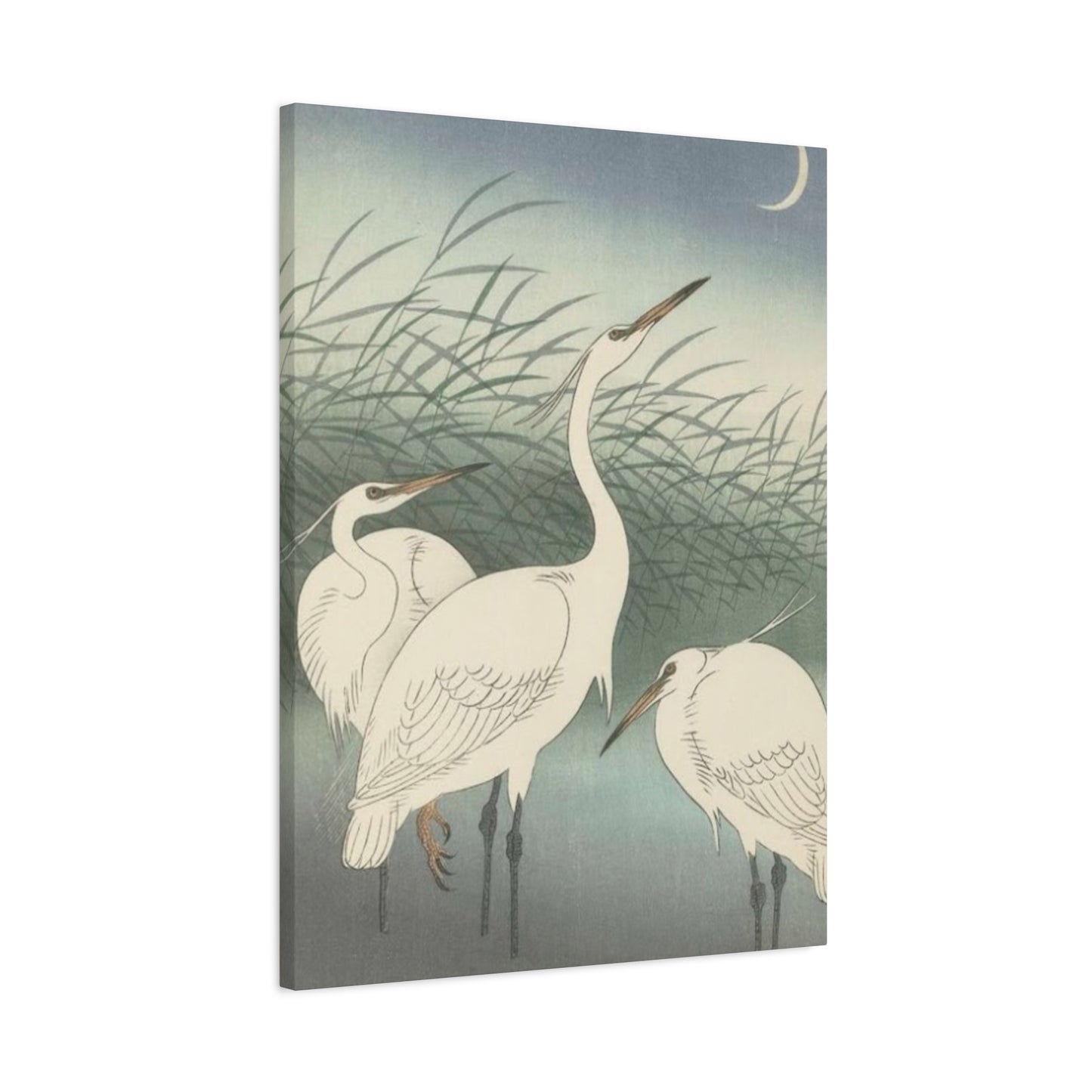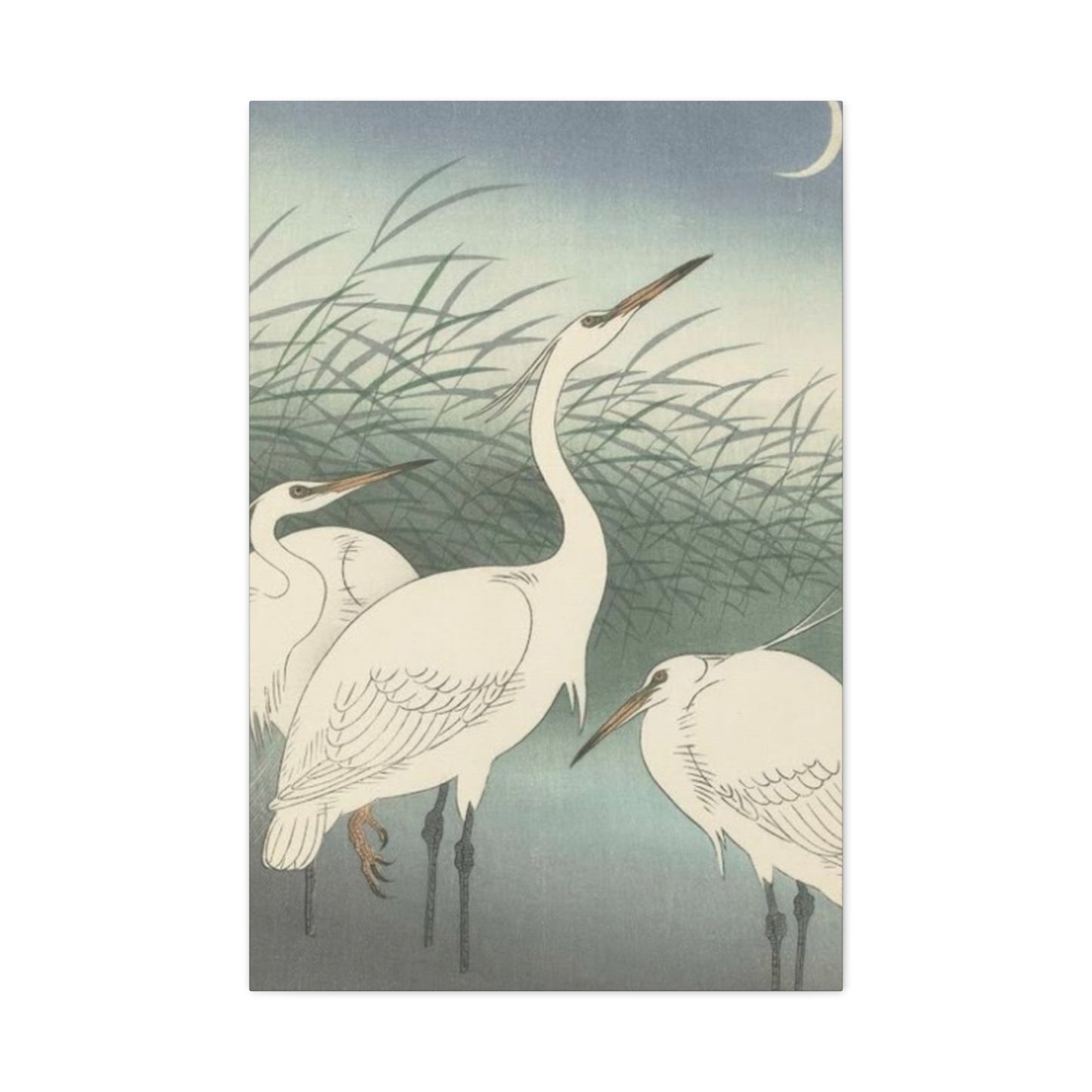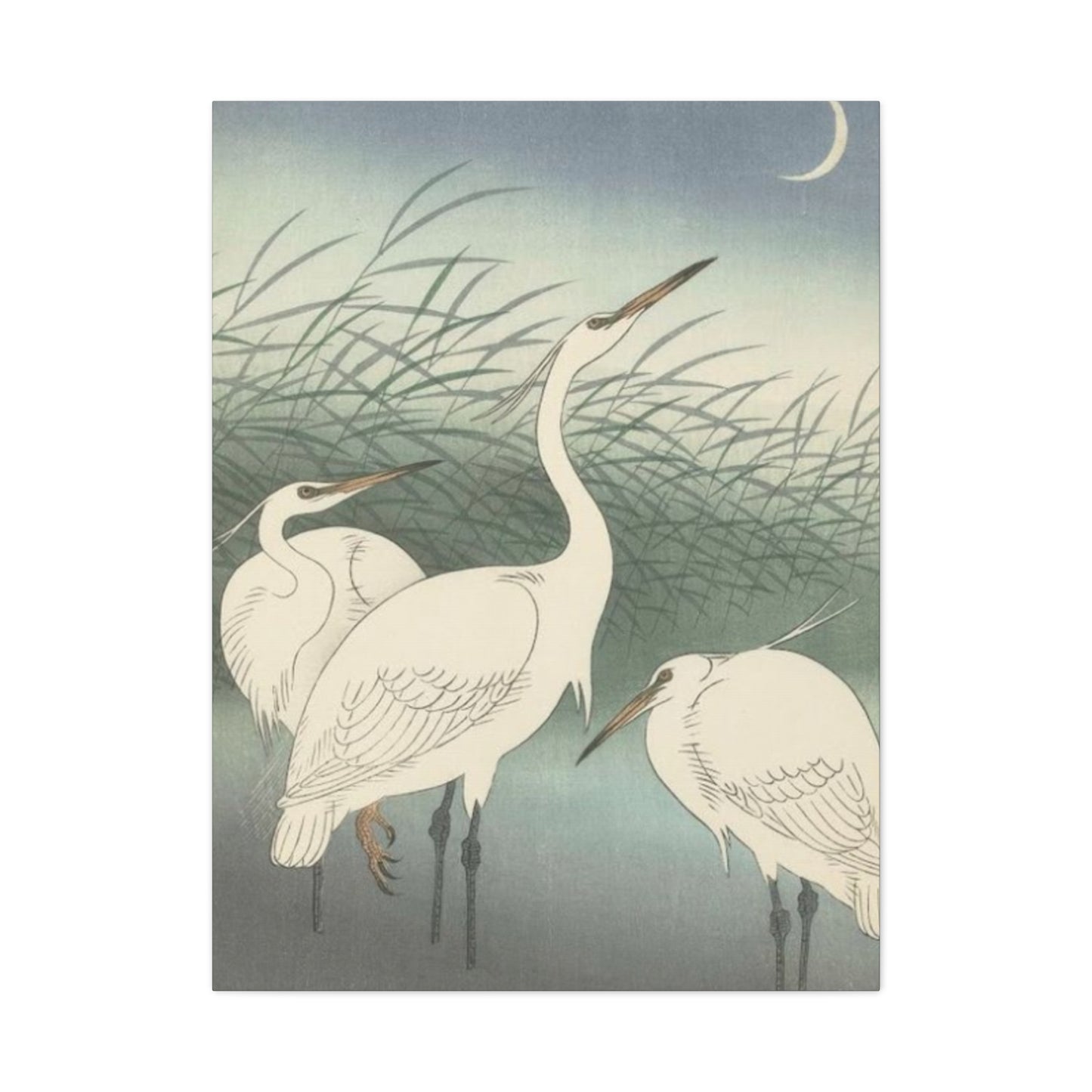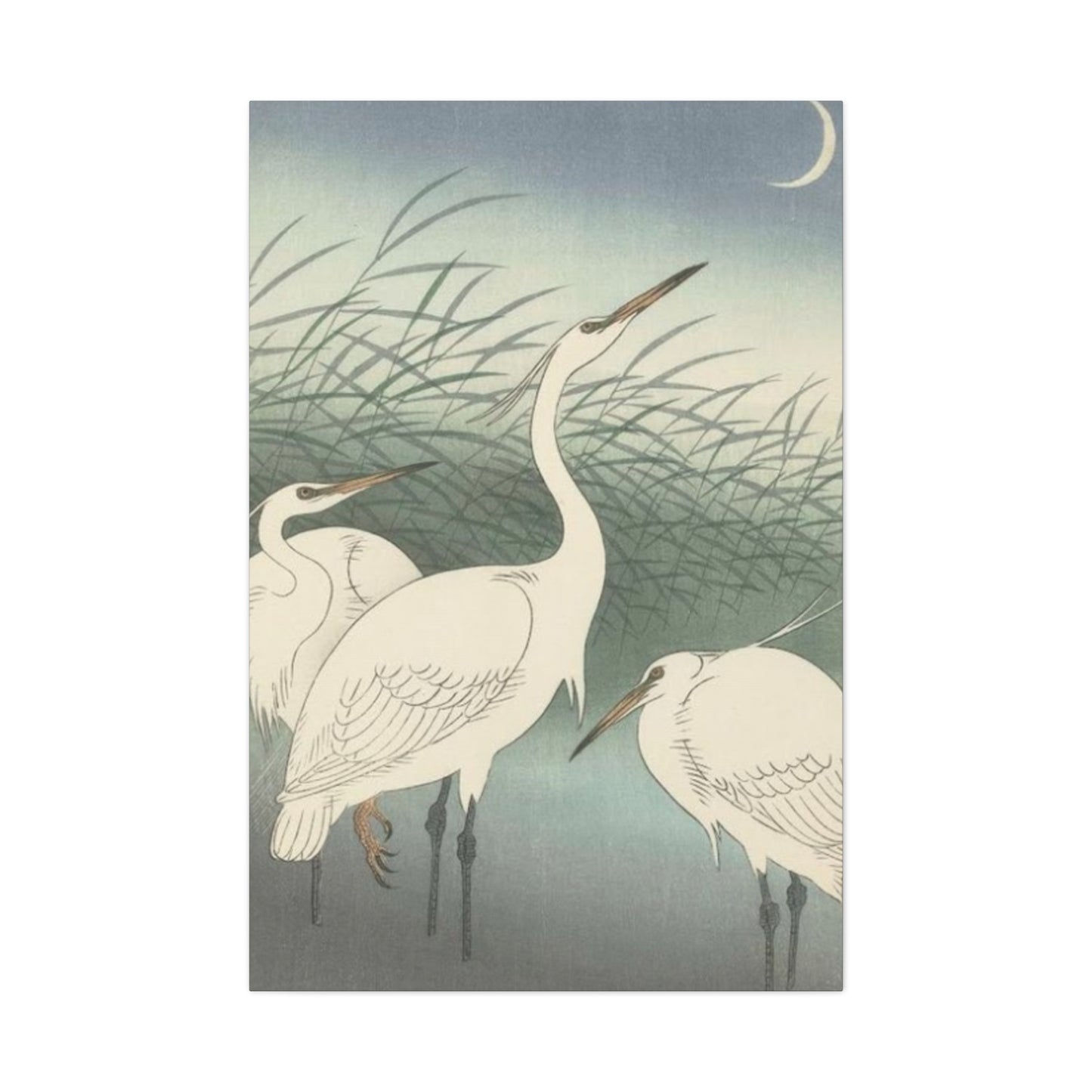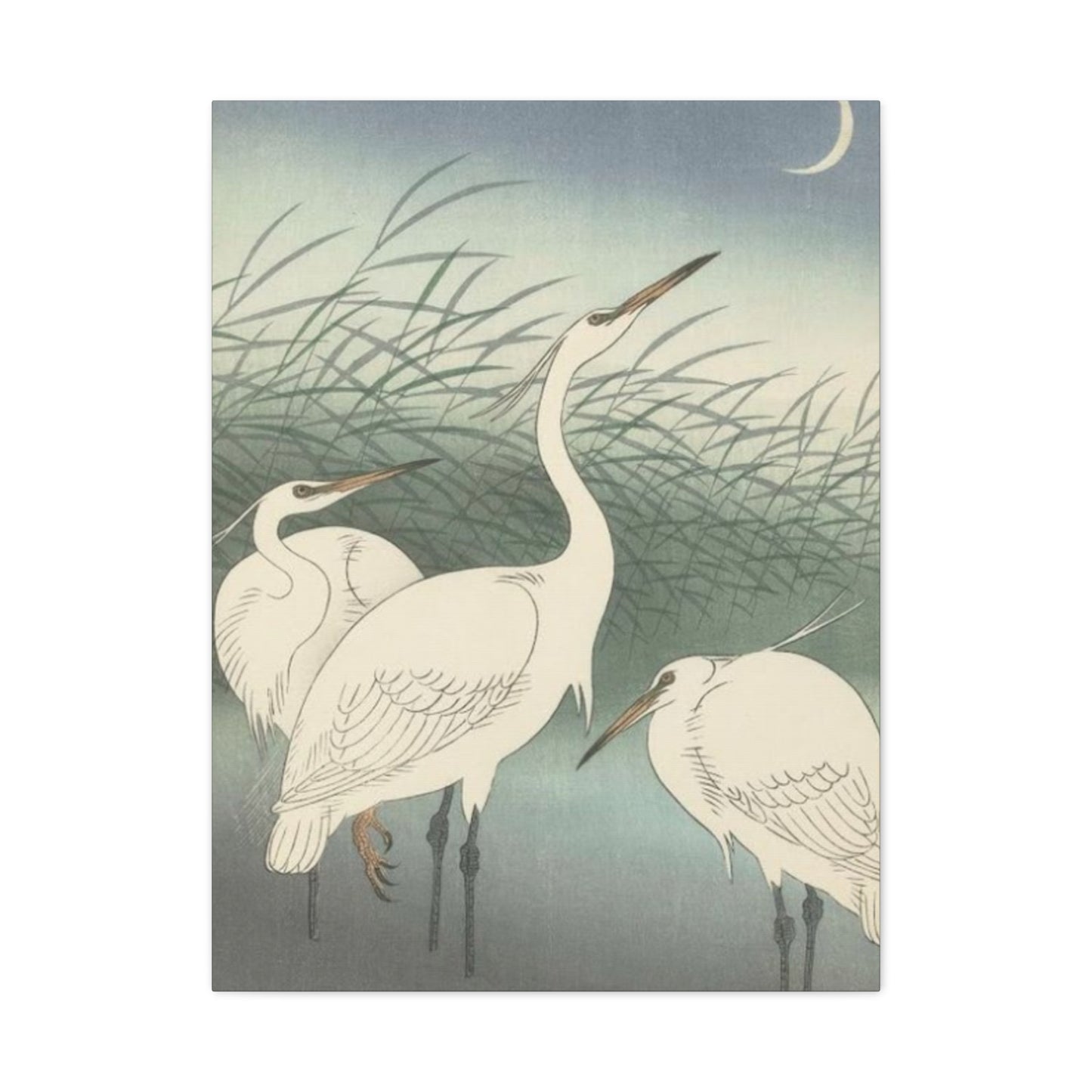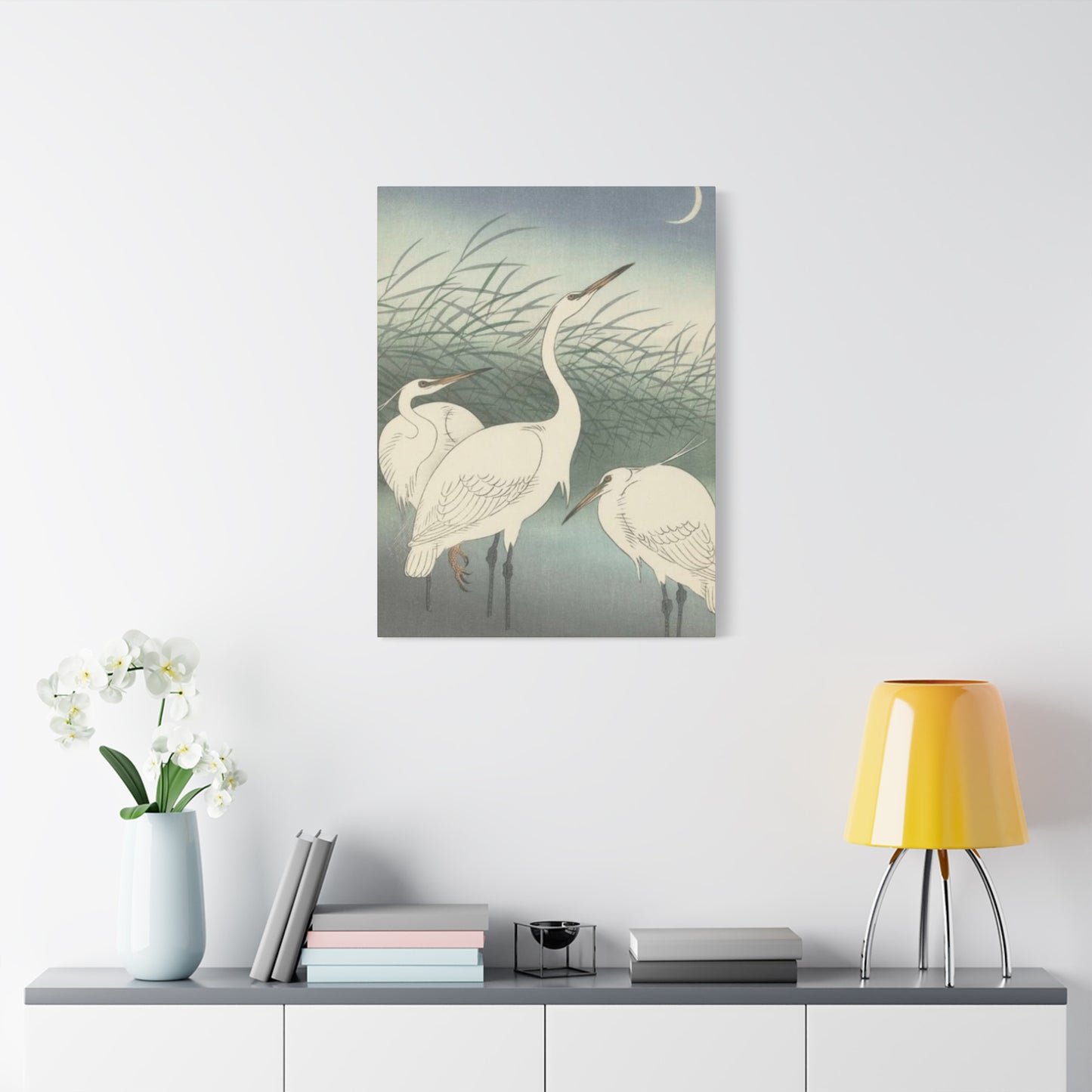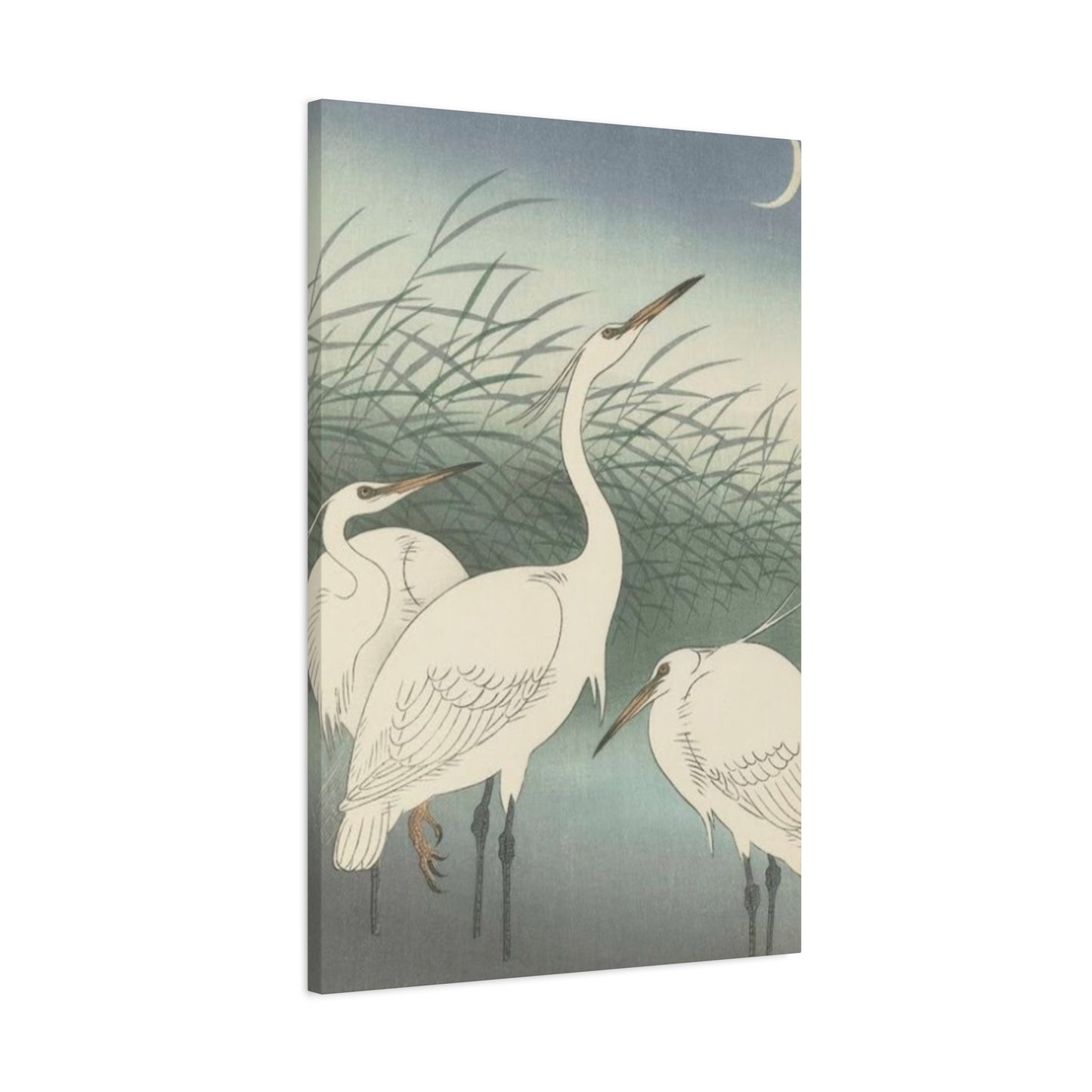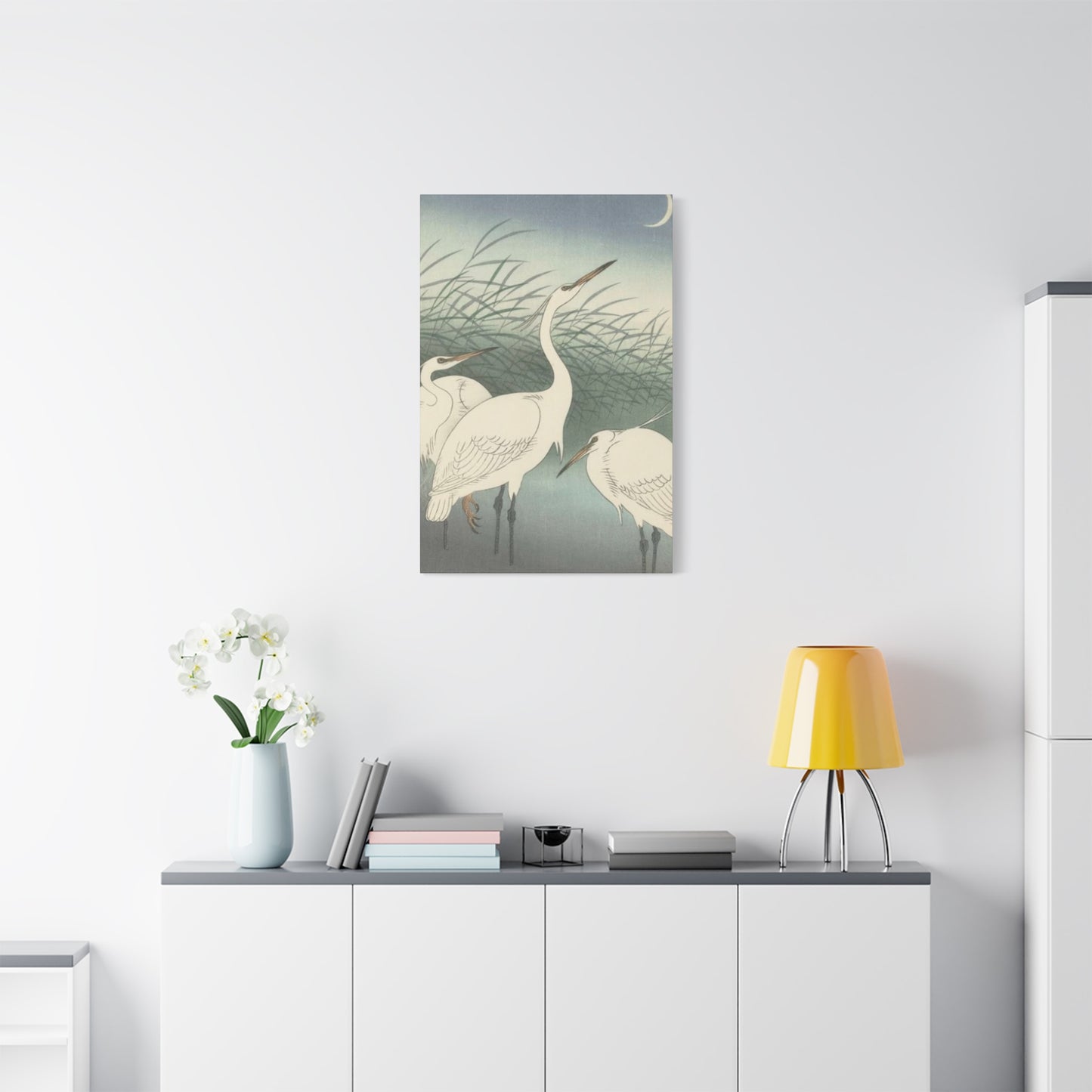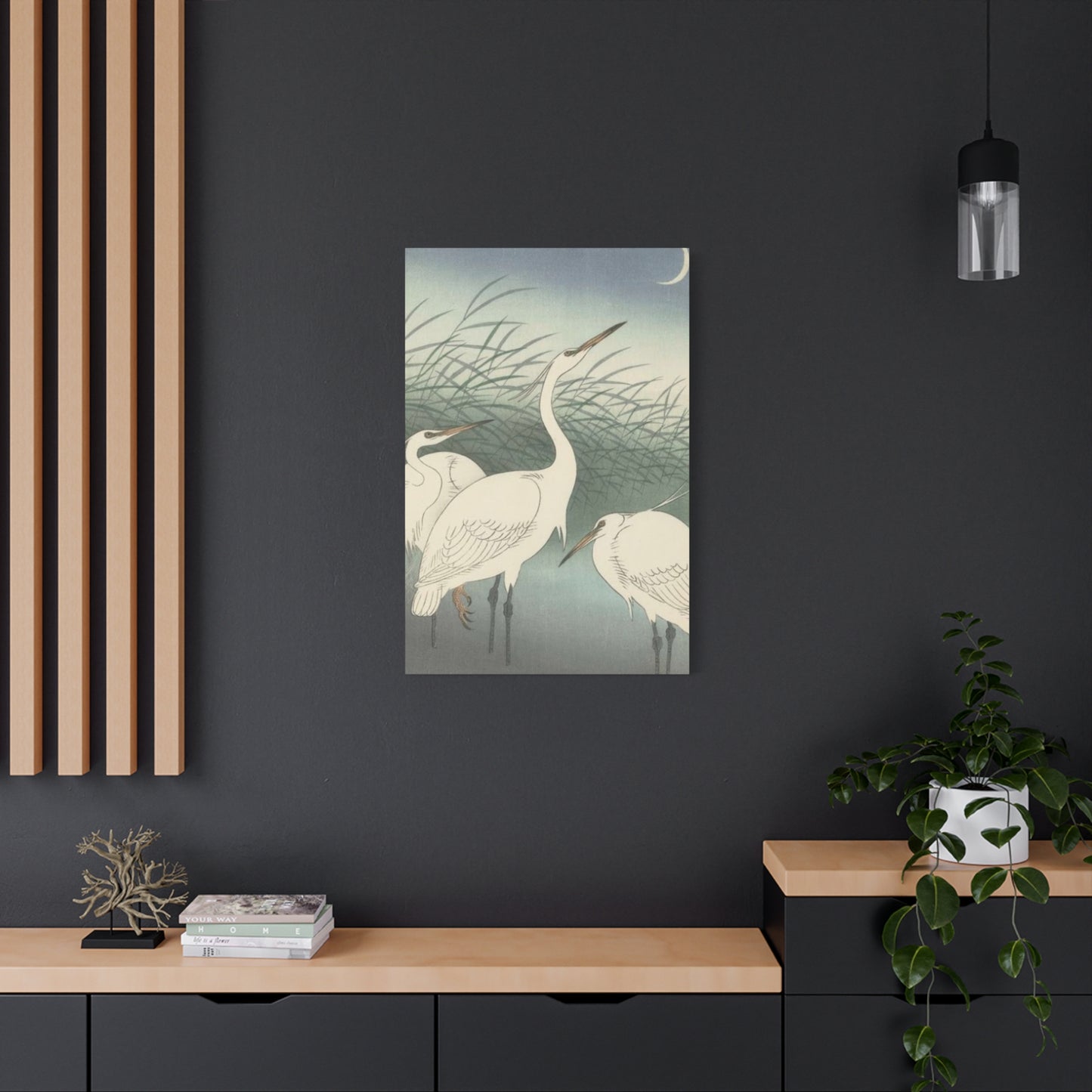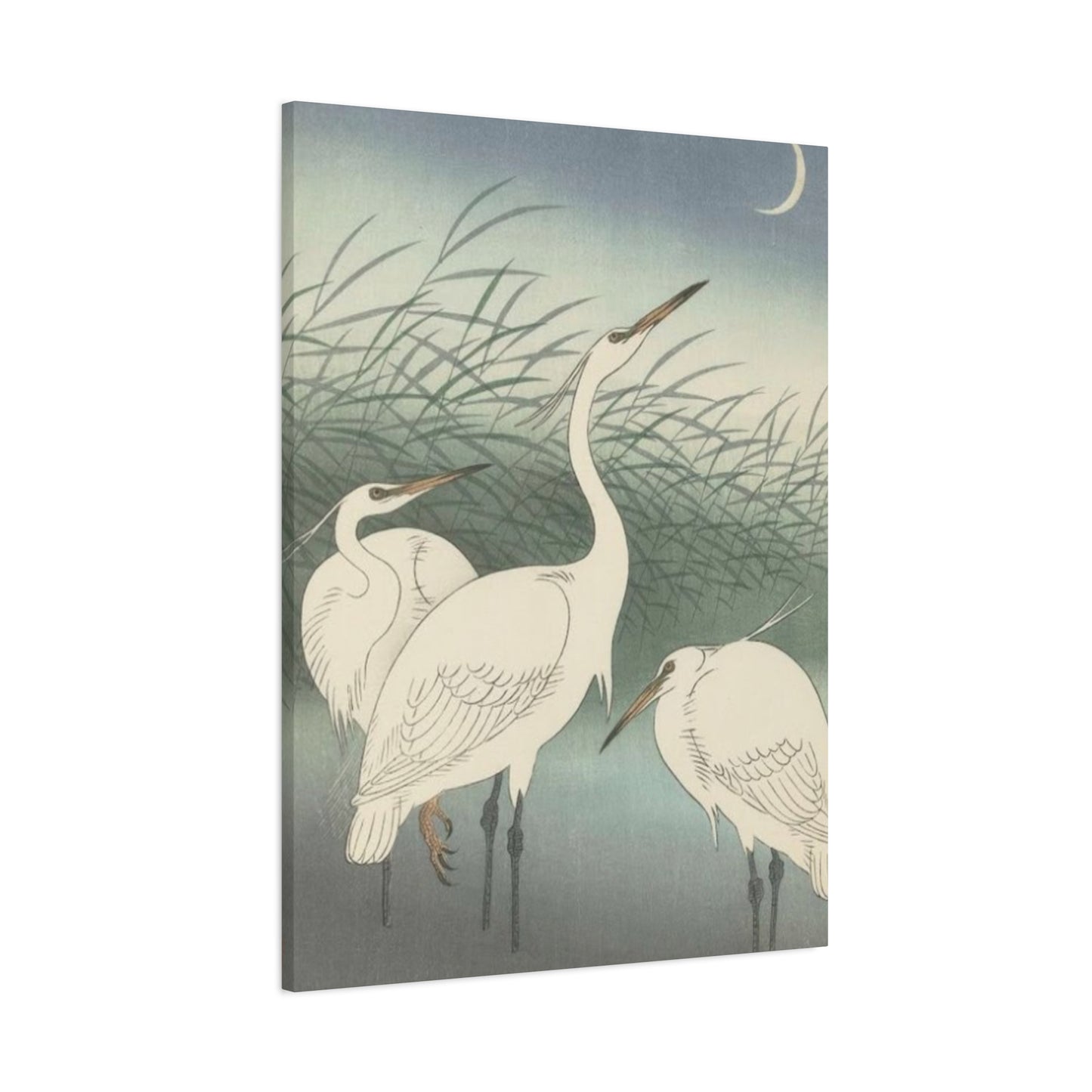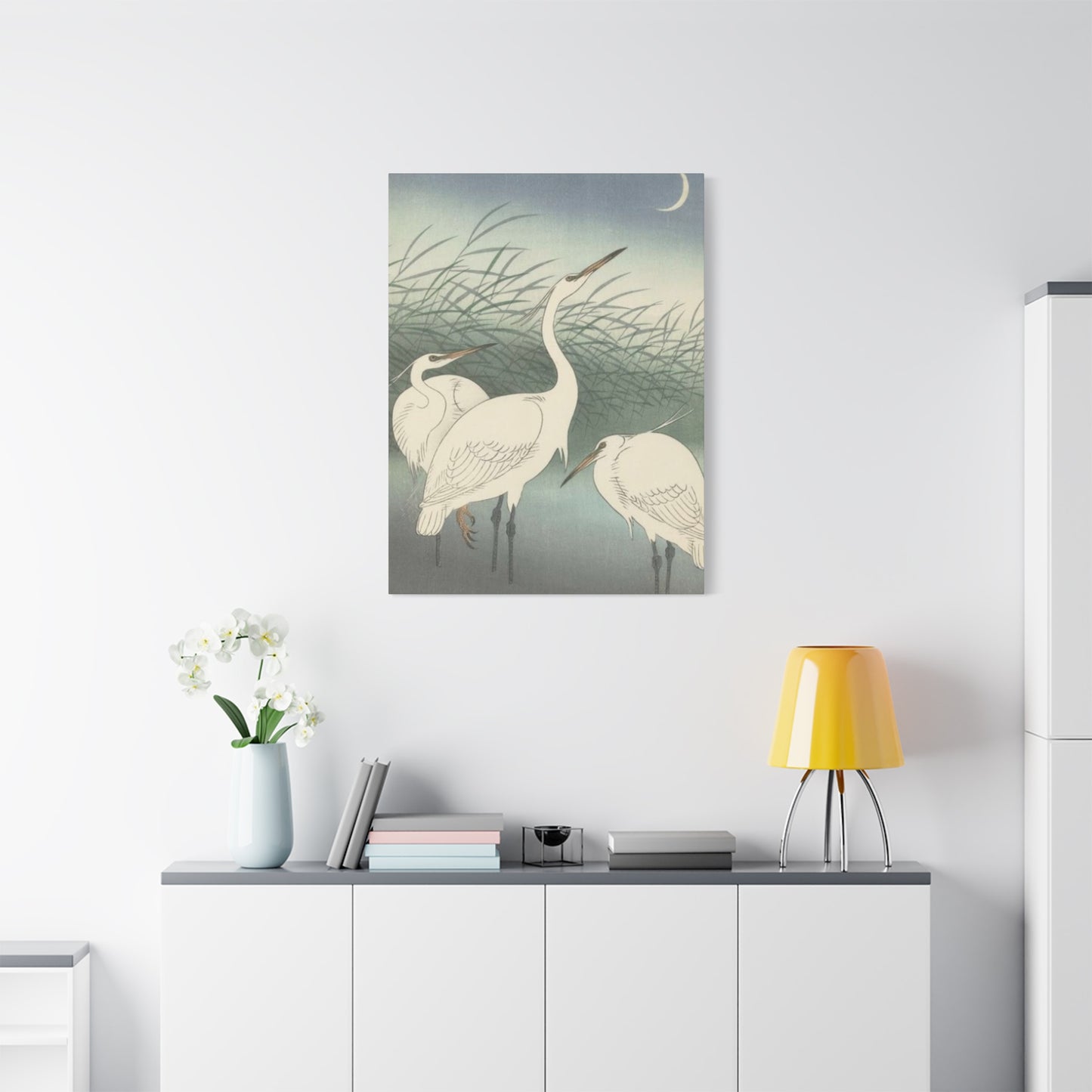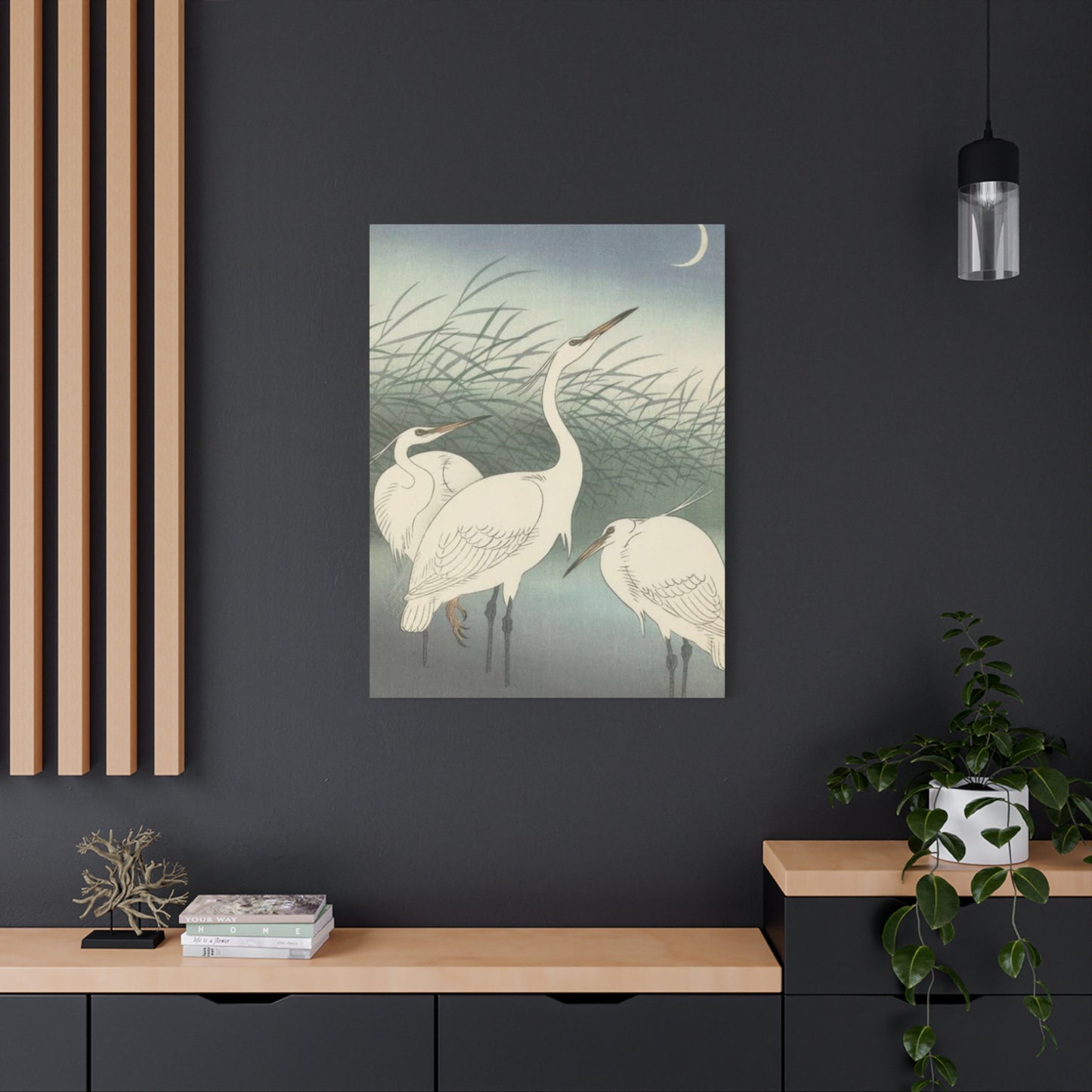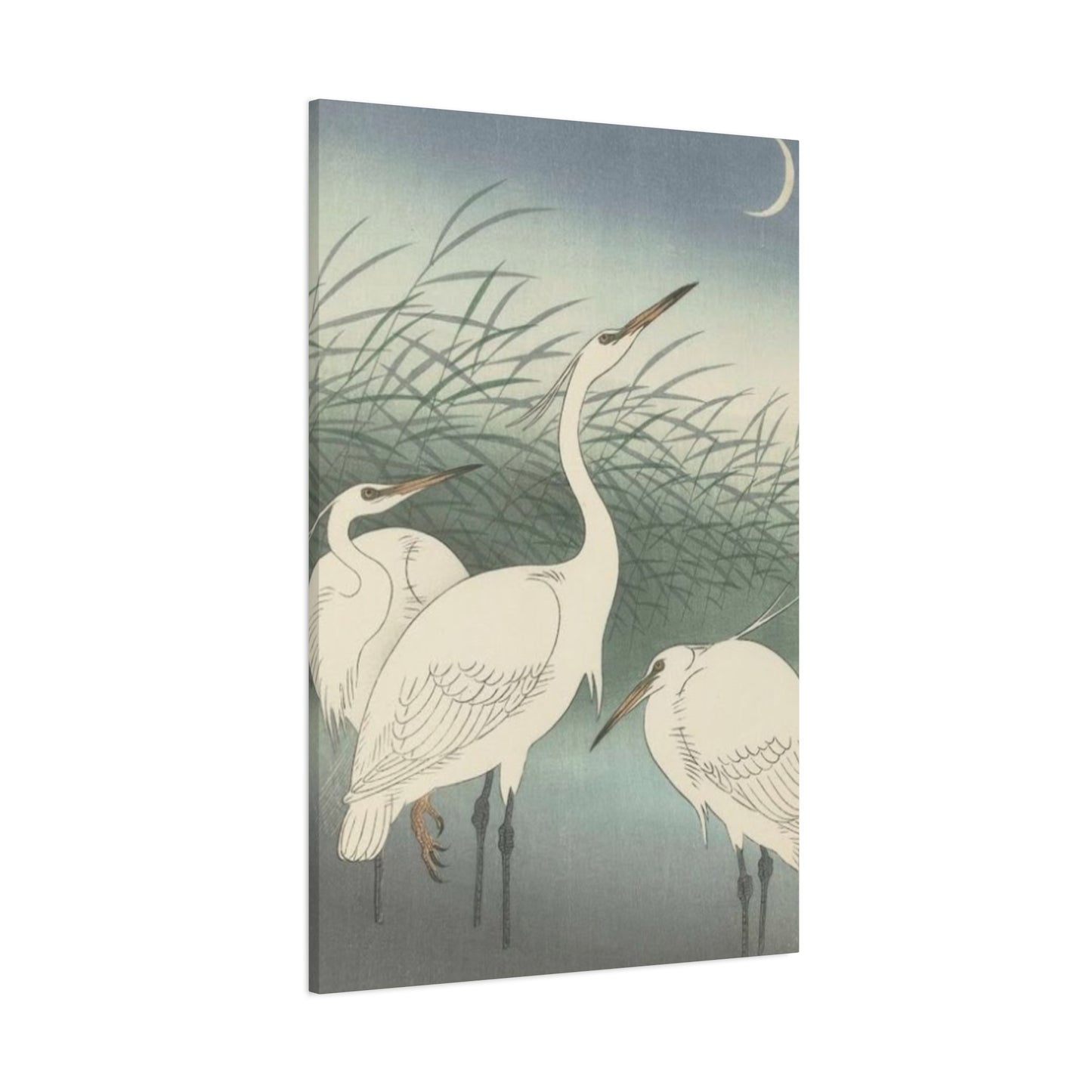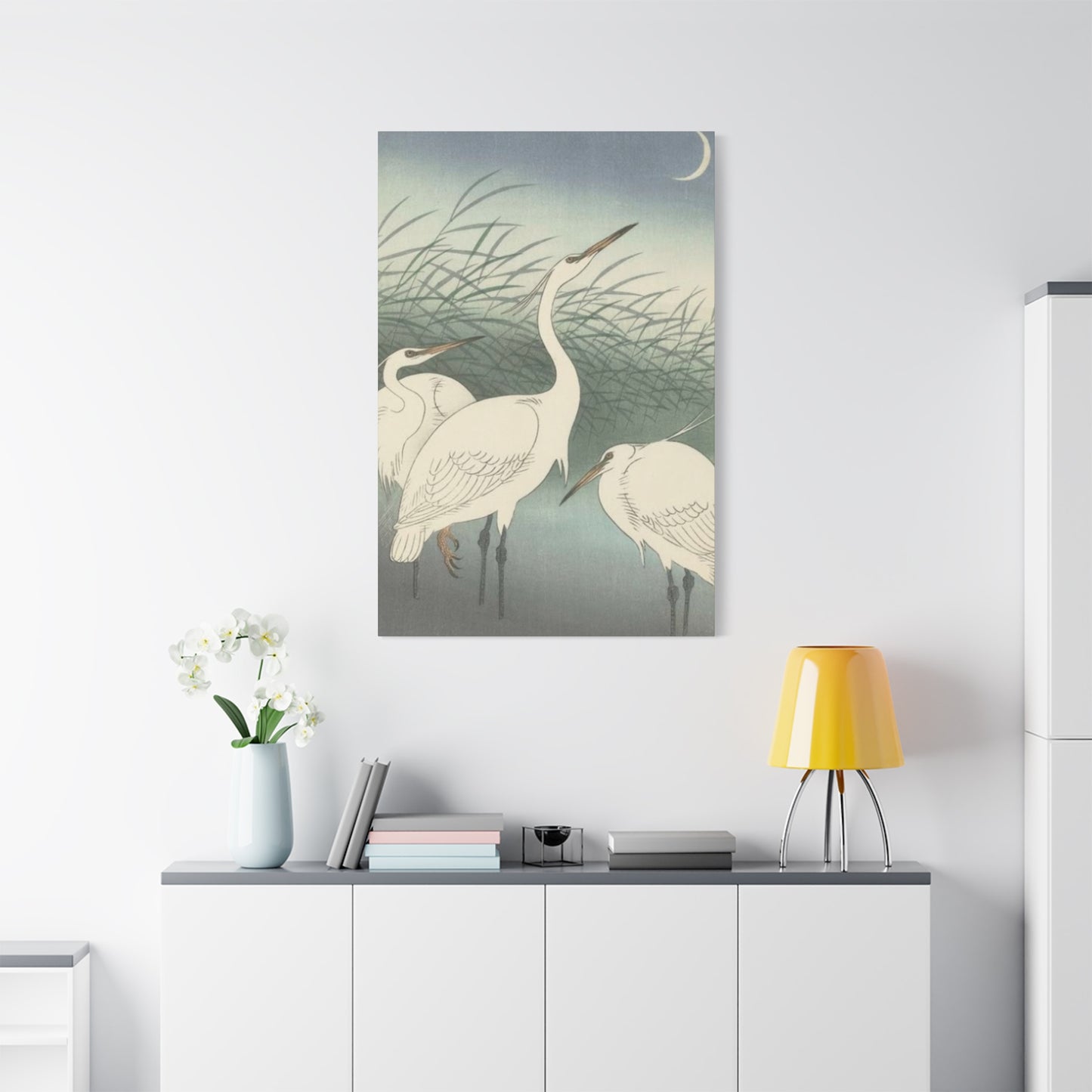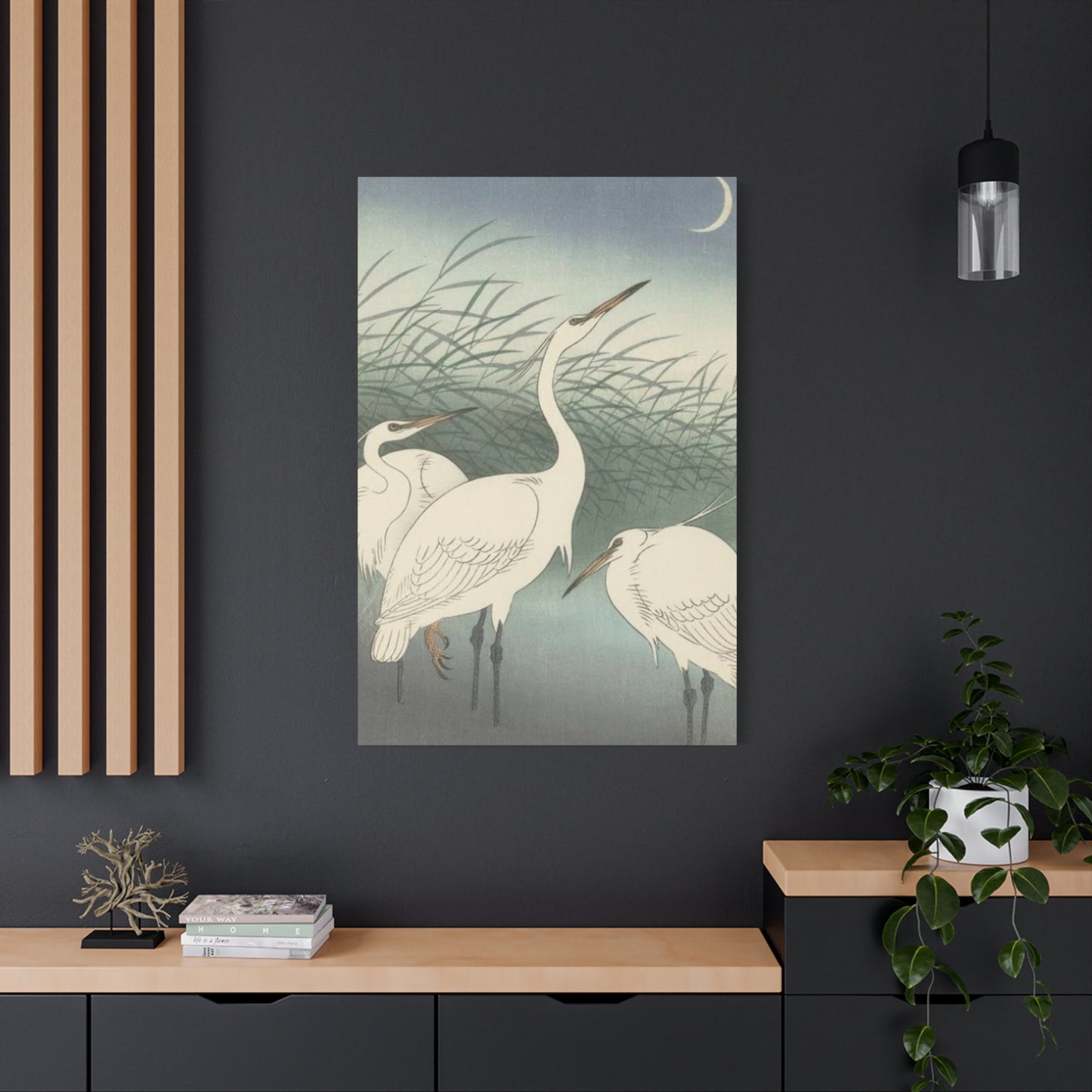Majestic Herons Together: Premium Wall Art Collection for Modern Living Spaces
The world of interior design has witnessed a remarkable surge in nature-inspired artwork, with heron paintings emerging as one of the most sophisticated and sought-after choices for contemporary homes. These magnificent birds, with their graceful silhouettes and serene presence, have captured the imagination of artists and homeowners alike, creating a unique niche in the wall art market. The growing popularity of herons together wall art reflects our deep-seated desire to bring elements of nature into our living spaces, creating environments that promote tranquility, elegance, and connection with the natural world.
Heron wall art represents more than just decorative elements; it embodies a lifestyle choice that values beauty, serenity, and the timeless appeal of wildlife imagery. The artistic representation of herons, whether depicted alone or in groups, carries profound symbolic meaning while serving as stunning visual focal points that can transform any room. From minimalist line drawings to richly detailed oil paintings, heron artwork offers versatility that suits various interior design styles and personal preferences.
The appeal of herons together wall art extends beyond mere aesthetic considerations. These pieces serve as conversation starters, meditation focal points, and expressions of personal taste that reflect an appreciation for natural beauty and artistic craftsmanship. As more homeowners seek to create spaces that reflect their values and provide respite from the chaos of modern life, heron paintings have emerged as perfect solutions that combine visual impact with emotional resonance.
Finest Heron Wall Art Collections for Sophisticated Interior Design
The market for heron wall art has evolved significantly, offering collectors and decorators an impressive array of options that cater to different tastes, budgets, and design requirements. Contemporary artists have embraced the challenge of capturing these majestic birds in various mediums, from traditional oil paintings and watercolors to modern digital prints and mixed media creations. The finest collections feature works that showcase herons in their natural habitats, emphasizing their elegant postures, distinctive silhouettes, and the peaceful environments they inhabit.
Premium heron wall art collections often feature multiple pieces designed to work together harmoniously, creating cohesive visual narratives that tell stories of wetland life, seasonal changes, and the delicate balance of aquatic ecosystems. These collections typically include varying sizes and formats, allowing homeowners to create dynamic displays that suit different wall spaces and room configurations. The most sought-after pieces combine technical excellence with emotional depth, capturing not just the physical appearance of herons but also their essence and the mood of their environment.
Leading collections often feature limited edition prints that maintain exclusivity while making high-quality heron artwork accessible to a broader audience. These pieces frequently incorporate innovative printing techniques, premium materials, and careful attention to color reproduction that ensures the artwork maintains its impact and longevity. Many collections also include artist statements and background information about the inspiration behind each piece, adding educational and emotional value to the aesthetic appeal.
The diversity within heron wall art collections allows for creative mixing and matching, enabling collectors to curate personalized galleries that reflect their individual style preferences. Some collections focus on realistic portrayals that emphasize natural beauty and scientific accuracy, while others embrace more interpretive approaches that prioritize emotional impact and artistic expression. This variety ensures that every homeowner can find heron artwork that resonates with their personal aesthetic and complements their existing decor.
Masterful Portrayal of Heron Elegance Through Contemporary Art
Artists who specialize in heron imagery have developed sophisticated techniques for capturing the inherent elegance of these remarkable birds. The challenge lies in translating the three-dimensional grace of a living heron into a two-dimensional medium while maintaining the sense of movement, dignity, and natural beauty that makes these birds so captivating. Successful heron paintings require careful attention to proportion, posture, and environmental context to create pieces that feel both authentic and artistically compelling.
The portrayal of heron elegance often focuses on key characteristics that define these birds: their elongated necks, precise movements, reflective poses, and the way they interact with water and light. Artists employ various techniques to emphasize these features, from detailed brushwork that captures individual feathers to broader strokes that suggest movement and atmosphere. The most effective pieces balance realistic detail with artistic interpretation, creating works that are scientifically accurate yet emotionally evocative.
Contemporary heron art frequently explores the relationship between these birds and their environment, depicting them against backgrounds of misty mornings, golden sunsets, or serene water surfaces. This contextual approach adds depth and narrative to the artwork, inviting viewers to imagine themselves in these peaceful settings. The interplay between the heron's form and its surroundings creates visual rhythm and balance that enhances the overall composition.
Color palettes in heron elegance artwork tend to emphasize natural tones that reflect the birds' habitat preferences. Blues, grays, whites, and earth tones dominate many pieces, creating harmonious compositions that integrate easily with various interior color schemes. Some artists experiment with more dramatic color choices, using unexpected hues to create contemporary interpretations that maintain the essential character of herons while offering fresh perspectives on familiar subjects.
The technical execution of elegant heron artwork requires understanding of avian anatomy, natural lighting conditions, and environmental details that contribute to authentic representation. Artists who excel in this genre often spend considerable time observing herons in their natural habitats, studying their behavior, movement patterns, and interactions with their surroundings. This research translates into artwork that feels genuine and captures the true essence of these magnificent birds.
Transforming Living Spaces with Heron-Inspired Interior Design
The integration of heron-inspired artwork into interior design schemes requires thoughtful consideration of space, lighting, existing decor, and the desired emotional atmosphere. Heron wall art possesses unique characteristics that make it particularly effective for creating calming, sophisticated environments that promote relaxation and contemplation. The natural association of herons with water and tranquil settings makes this artwork especially suitable for spaces where peace and serenity are priorities.
When incorporating heron artwork into living spaces, designers often consider the psychological impact of these images on daily life. The serene presence of herons can help create environments that serve as refuges from stress and chaos, providing visual anchors that encourage mindfulness and appreciation of natural beauty. This therapeutic aspect of heron artwork makes it particularly valuable in bedrooms, meditation spaces, reading nooks, and other areas designated for rest and reflection.
The scale and placement of heron artwork significantly influence its impact on interior spaces. Large-format pieces can serve as dramatic focal points that command attention and establish the mood for entire rooms, while smaller works might be grouped to create intimate collections that reward closer examination. The height at which heron paintings are hung affects how they interact with furniture and architectural features, and careful placement can enhance both the artwork and the surrounding space.
Color coordination between heron artwork and interior design elements requires attention to both existing color schemes and the desired atmosphere. The naturally muted palettes common in heron paintings make them versatile choices that complement many decorating styles, from traditional to contemporary. However, the most successful integrations consider how the artwork's colors interact with wall colors, furniture finishes, textile patterns, and lighting conditions throughout different times of day.
The textural qualities of heron artwork can contribute significantly to the overall sensory experience of interior spaces. Paintings with visible brushwork add tactile interest that complements smooth surfaces, while prints on textured papers or canvas can provide subtle dimensional variation. The framing choices for heron artwork also impact the overall design integration, with frame styles and colors either blending seamlessly with existing decor or providing deliberate contrasts that enhance visual interest.
Curating Exceptional Heron Collections for Wildlife Art Enthusiasts
Building a meaningful collection of heron artwork requires developing an understanding of different artistic approaches, technical qualities, and thematic variations within this specialized genre. Serious collectors often begin by identifying their preferences regarding artistic style, whether drawn to realistic representations, impressionistic interpretations, contemporary abstractions, or traditional wildlife art approaches. This foundation helps guide acquisition decisions and ensures collection coherence over time.
The most valuable heron collections often include works from multiple time periods, representing different artistic movements and approaches to wildlife representation. Historical pieces might include naturalist illustrations, traditional sporting art, or early conservation-minded paintings that document herons in their natural environments. Contemporary additions might feature innovative techniques, unconventional materials, or fresh perspectives on familiar subjects that reflect current artistic trends and environmental concerns.
Quality assessment in heron artwork involves evaluating technical execution, artistic merit, condition, provenance, and market recognition. Technical factors include the accuracy of anatomical representation, skillful use of the chosen medium, and overall craftsmanship. Artistic merit encompasses composition, color harmony, emotional impact, and the artist's unique vision or interpretation. Condition considerations are particularly important for older pieces, while provenance documentation adds historical significance and helps establish authenticity.
Thematic diversity within heron collections might include seasonal representations, different species of herons, various habitat settings, and different behavioral moments. Some collectors focus on specific aspects such as herons in flight, feeding behaviors, nesting activities, or social interactions. Others prefer geographic diversity, seeking artwork that depicts herons from different regions or ecosystems around the world.
The investment potential of heron artwork depends on factors including artist reputation, rarity, condition, and market demand. While not all collectors prioritize financial considerations, understanding market trends and values can inform purchasing decisions and help ensure that collections maintain or increase their worth over time. Limited edition prints, works by established wildlife artists, and pieces with unique historical significance often represent the most stable investment opportunities within this category.
Display considerations for heron collections include adequate wall space, appropriate lighting, climate control, and security measures that protect valuable pieces while allowing for enjoyment and appreciation. Rotating displays can keep collections fresh and prevent overexposure to light and environmental factors that might cause deterioration. Professional conservation assessments and maintenance help ensure that collections remain in excellent condition for future generations to appreciate.
Cultural and Artistic Symbolism of Herons Throughout History
The symbolic significance of herons in art and culture spans millennia and crosses numerous cultural boundaries, reflecting the universal human fascination with these graceful birds. Throughout history, herons have represented concepts including patience, wisdom, tranquility, self-reliance, and spiritual contemplation. These symbolic associations have made heron imagery particularly meaningful in artistic contexts, where visual representations carry deeper meanings beyond mere decorative appeal.
In ancient Egyptian culture, herons held special significance as symbols of regeneration and renewal, often associated with the flooding of the Nile River that brought life to the agricultural lands. Egyptian art frequently depicted herons in tomb paintings and religious contexts, emphasizing their connection to cycles of death and rebirth. This symbolism contributed to the bird's enduring appeal in artistic representation and established early precedents for the spiritual significance often attributed to heron imagery.
Asian artistic traditions, particularly in China and Japan, have long celebrated herons as symbols of purity, patience, and wisdom. Traditional ink paintings and scroll works frequently feature herons as central subjects, emphasizing their contemplative nature and graceful presence. The Zen philosophy embedded in much Asian art finds perfect expression in heron imagery, where the bird's still, watchful posture embodies meditation and mindful awareness of the present moment.
Native American cultures across North America have incorporated heron symbolism into their artistic traditions, often viewing these birds as messengers between the earthly and spiritual realms. Tribal artwork, ceremonial objects, and storytelling traditions frequently feature herons as wise guides who possess special knowledge about navigating between different worlds or states of consciousness. This spiritual dimension adds profound meaning to contemporary heron artwork that draws on these traditional associations.
European artistic traditions have portrayed herons in various contexts, from medieval illuminated manuscripts to Renaissance paintings and modern wildlife art. The bird's association with nobility and patience made it a popular subject in aristocratic contexts, while its natural beauty attracted artists interested in capturing the essence of untamed nature. These diverse cultural interpretations have created rich artistic vocabularies that continue to influence contemporary heron artwork.
The psychological appeal of heron symbolism in modern contexts relates to widespread desires for peace, stability, and connection with nature. In our fast-paced, technology-driven world, heron imagery provides visual reminders of qualities that many people seek to cultivate in their own lives. The contemplative nature of herons resonates with contemporary interests in mindfulness, meditation, and environmental awareness, making heron artwork particularly relevant to current lifestyle trends.
Understanding the symbolic heritage of heron imagery enhances appreciation for contemporary artworks that draw on these traditional meanings while adding fresh perspectives and interpretations. Artists who work within this tradition often balance respect for historical symbolism with innovative approaches that speak to contemporary audiences and concerns.
Exclusive Limited Edition Heron Art Pieces for Discerning Collectors
The limited edition heron art market represents the intersection of artistic excellence, exclusivity, and collecting value, offering discerning buyers access to high-quality pieces that combine aesthetic appeal with investment potential. Limited edition releases typically feature carefully controlled production numbers, superior materials, artist involvement in the production process, and detailed documentation that ensures authenticity and maintains exclusivity.
Premium limited edition heron artwork often involves collaboration between renowned wildlife artists and specialized publishers who understand the technical requirements for reproducing fine art with exceptional quality. These partnerships result in pieces that maintain the artistic integrity of original paintings while making them accessible to collectors who might not be able to acquire unique originals. The production process typically involves advanced printing techniques, archival materials, and quality control measures that ensure each piece meets exacting standards.
The numbering and documentation systems used for limited edition heron art provide collectors with important information about rarity, authenticity, and production details. Lower edition numbers often command premium prices, while pieces signed by the artist add personal connection and additional value. Certificates of authenticity accompany legitimate limited editions, providing essential documentation for insurance, resale, and collection management purposes.
Exclusive releases often feature special characteristics that distinguish them from standard productions, such as enhanced printing techniques, unique paper selections, hand-finished elements, or special packaging that adds to their collectible appeal. Some limited editions include remarques, small original sketches or paintings added by the artist to individual prints, creating unique variations within the numbered series.
The market for limited edition heron art operates within broader art market dynamics while maintaining its own specific characteristics related to wildlife art collecting and nature-themed decor trends. Successful limited editions often sell out quickly, creating secondary markets where early purchasers may realize significant appreciation in value. However, collecting should balance investment considerations with personal enjoyment and aesthetic preferences.
Publisher reputation plays a crucial role in limited edition value and desirability. Established publishers with histories of working with prominent wildlife artists and maintaining high production standards tend to produce pieces that hold their value better than releases from unknown or less reputable sources. Collectors often develop relationships with preferred publishers to gain early access to new releases and insider information about upcoming projects.
Edition sizes for heron artwork typically range from very small releases of 50 or fewer pieces to larger editions of several hundred prints. The relationship between edition size and value varies depending on artist reputation, subject matter appeal, and overall market conditions. Some collectors prefer smaller editions for their exclusivity, while others appreciate larger editions that offer more accessible pricing while still maintaining limited availability.
Strategic Placement and Display Techniques for Heron Paintings
The successful display of heron paintings requires understanding of visual principles, spatial relationships, and environmental factors that affect how artwork is perceived and appreciated. Strategic placement considers not only aesthetic impact but also practical concerns such as lighting conditions, traffic patterns, viewing angles, and the relationship between artwork and surrounding furnishings.
Room-by-room considerations for heron art placement recognize that different spaces serve various functions and create distinct moods that can either complement or conflict with the serene nature of heron imagery. Living rooms often benefit from larger heron pieces that serve as conversation focal points, while bedrooms might be better suited to smaller, more intimate works that promote relaxation and peaceful sleep.
Lighting plays a crucial role in how heron artwork is perceived and appreciated. Natural light can enhance the colors and details in paintings, but direct sunlight should be avoided to prevent fading and deterioration. Artificial lighting options include picture lights, track lighting, and ambient room lighting that can be adjusted to highlight artwork without creating glare or uneven illumination. The color temperature of artificial light affects how artwork appears, with warmer lights enhancing earth tones and cooler lights emphasizing blues and grays common in heron paintings.
Height and positioning guidelines help ensure that heron artwork is displayed at optimal viewing levels and angles. The general rule of hanging artwork at eye level applies to heron paintings, but adjustments may be necessary based on room function, furniture arrangement, and the intended viewing context. Groupings of multiple pieces require careful attention to spacing, alignment, and visual balance to create cohesive displays that enhance rather than compete with individual works.
The relationship between heron artwork and surrounding wall space affects visual impact and aesthetic balance. Adequate breathing room around paintings prevents visual crowding while emphasizing the importance of each piece. However, too much empty space can make artwork appear lost or disconnected from its environment. The size and color of walls influence how heron paintings appear and may require adjustments in lighting, framing, or positioning.
Furniture placement and room layout considerations ensure that heron artwork integrates well with functional space requirements while maintaining its visual impact. Seating arrangements that provide comfortable viewing angles enhance appreciation of detailed work, while clear sight lines prevent artwork from being blocked by furniture or other objects. The scale relationship between artwork and furniture helps create visual harmony and prevents either element from overwhelming the other.
Seasonal and temporal considerations recognize that room lighting, furniture arrangements, and usage patterns may change throughout the year, potentially affecting how heron artwork appears and functions within interior spaces. Flexibility in lighting systems and the ability to rotate or relocate pieces can help maintain optimal display conditions and prevent viewer fatigue from overexposure to the same arrangements.
Creating Dramatic Statement Pieces with Heron Wall Art
The use of heron wall art as statement pieces requires selecting works with sufficient visual impact to command attention and establish the aesthetic tone for entire rooms or spaces. Statement pieces typically feature bold compositions, dramatic scale, compelling subject matter, or unique artistic approaches that distinguish them from background decorative elements.
Scale considerations for statement heron artwork often favor larger formats that can hold their own against substantial wall areas and room proportions. Oversized pieces create immediate visual impact and can serve as architectural elements that help define space and establish focal points. However, the most effective statement pieces balance size with artistic quality, ensuring that scale enhancement doesn't compromise the integrity of the artistic vision.
Compositional elements that contribute to statement impact include dynamic poses, dramatic lighting effects, compelling color relationships, and engaging narrative content. Heron artwork featuring birds in flight, hunting behaviors, or interaction with dramatic natural settings often possesses the visual energy necessary for statement applications. The key lies in selecting pieces that maintain sophistication while providing sufficient visual interest to anchor large spaces.
Color relationships between statement heron artwork and surrounding interior elements can either create harmonious integration or deliberate contrast that emphasizes the artwork's importance. Monochromatic schemes might use heron art to introduce subtle color variations and textural interest, while contrasting approaches might employ dramatic color differences to create visual excitement and emphasis.
Lighting design for statement heron pieces often requires more sophisticated approaches than standard artwork display, potentially including dedicated lighting systems, adjustable fixtures, and consideration of how lighting affects the artwork's appearance throughout different times of day and seasonal variations. Professional lighting consultation may be valuable for high-impact installations that need to perform effectively under various conditions.
The supporting role of framing and presentation in statement applications requires careful attention to how these elements either enhance or detract from the artwork's impact. Statement pieces often benefit from substantial, high-quality frames that complement the artwork's importance without competing for attention. Custom framing options allow for personalized approaches that optimize the relationship between artwork and architectural context.
Spatial relationships between statement heron artwork and other room elements require careful orchestration to prevent visual conflicts or competition for attention. Supporting decorative elements should complement rather than compete with statement pieces, while furniture arrangements should facilitate comfortable viewing and appreciation of the featured artwork.
Harmonizing Heron Art with Contemporary Home Decor Styles
The integration of heron artwork with contemporary home decor requires understanding of current design trends, color preferences, material choices, and lifestyle considerations that define modern interior spaces. Contemporary design's emphasis on clean lines, minimal clutter, and carefully curated aesthetics creates both opportunities and challenges for incorporating nature-themed artwork.
Modern minimalist design approaches often favor heron artwork that emphasizes simplicity, clean compositions, and restrained color palettes. Line drawings, simplified silhouettes, and monochromatic treatments can complement minimalist interiors while adding organic elements that prevent spaces from feeling sterile or impersonal. The key lies in selecting pieces that maintain the essential grace and beauty of herons while conforming to minimalist aesthetic principles.
Contemporary color trends influence how heron artwork integrates with modern interior schemes. Current preferences for neutral bases with selective color accents create opportunities for heron art to serve either as harmonious background elements or strategic color introductions. The natural color ranges found in heron imagery align well with popular contemporary palettes that emphasize earth tones, soft blues, and sophisticated grays.
Texture and material considerations in contemporary design affect how heron artwork relates to other interior elements. Modern spaces often feature combinations of smooth and textured surfaces, natural and manufactured materials, and matte and glossy finishes. Heron artwork can contribute to these textural conversations through choice of medium, printing techniques, framing materials, and presentation methods.
The role of technology in contemporary homes creates new contexts for displaying heron artwork, including digital displays, integrated lighting systems, and smart home features that can enhance the artwork experience. Some collectors explore digital art options that allow for changing displays or interactive features while maintaining the essential appeal of heron imagery.
Furniture relationships in contemporary spaces tend to emphasize functionality, clean design, and carefully selected pieces rather than comprehensive room sets. This approach creates opportunities for heron artwork to bridge between functional and aesthetic elements, providing visual interest that complements rather than competes with furniture choices.
Lifestyle considerations in contemporary home design often prioritize flexibility, easy maintenance, and spaces that support modern living patterns. Heron artwork selections should consider these practical requirements while maintaining aesthetic appeal, potentially favoring pieces that work well with changing arrangements, require minimal maintenance, and adapt to various lighting conditions.
Artistic Styles in Heron Wall Art Creations
The evolution of artistic styles in heron wall art reflects broader trends in contemporary art while addressing the specific challenges and opportunities presented by wildlife subjects. Current trends encompass both traditional approaches that emphasize realistic representation and innovative techniques that explore new ways of interpreting familiar subjects.
Photorealistic approaches to heron artwork continue to attract collectors who appreciate technical excellence and detailed natural representation. These works often showcase extraordinary skill in capturing minute details of feather texture, light reflection on water surfaces, and environmental elements that contribute to authentic habitat portrayals. Advances in digital art tools have expanded possibilities for achieving photorealistic effects while maintaining artistic interpretation.
Impressionistic interpretations of heron subjects emphasize mood, atmosphere, and emotional response over literal accuracy. These works might feature loose brushwork, interpretive color choices, and compositional approaches that prioritize artistic expression over documentary representation. The impressionistic tradition allows artists to capture the essence of heron grace while exploring personal aesthetic visions.
Abstract and contemporary approaches to heron artwork explore the potential for reducing these birds to essential forms, colors, and movements that maintain recognition while offering fresh perspectives. These works might emphasize the geometric qualities of heron silhouettes, explore color relationships suggested by natural settings, or investigate movement patterns through non-representational techniques.
Mixed media applications in heron art combine traditional painting or drawing techniques with elements such as collage, texture applications, digital components, or three-dimensional elements. These hybrid approaches can create unique visual effects that distinguish pieces from traditional wildlife art while maintaining connection to heron subjects.
Digital art techniques offer new possibilities for heron artwork creation, including enhanced color control, unlimited revision capabilities, and integration with printing technologies that can reproduce digital works with exceptional quality. Digital approaches also enable artists to experiment with effects and compositions that might be difficult or impossible to achieve with traditional media.
Cultural fusion styles incorporate elements from different artistic traditions in creating contemporary heron artwork. These might combine Western realistic techniques with Eastern aesthetic principles, indigenous symbolic elements with modern artistic approaches, or historical artistic styles with contemporary subject interpretations.
The sustainability movement in art has influenced heron artwork creation through emphasis on environmentally responsible materials, production methods, and subject matter that raises awareness about conservation issues. Artists working within this framework might use recycled materials, non-toxic media, or focus on themes that highlight environmental concerns related to wetland habitats and heron conservation.
Designing Peaceful Sanctuaries with Heron-Themed Artwork
The creation of tranquil spaces using heron-themed artwork draws on both the inherent calming qualities of heron imagery and strategic design approaches that maximize the peaceful potential of these natural subjects. Effective sanctuary design considers psychological factors, environmental elements, and aesthetic principles that work together to create spaces that promote relaxation, contemplation, and restoration.
Color psychology plays a significant role in designing peaceful environments with heron artwork. The soft blues, gentle grays, and earth tones commonly found in heron paintings naturally promote feelings of calm and serenity. These colors can be extended throughout room design through paint choices, textile selections, and accessory decisions that create harmonious color relationships supporting the tranquil atmosphere.
Lighting design for peaceful spaces requires careful attention to both natural and artificial illumination that enhances the calming qualities of heron artwork without creating harsh contrasts or distracting reflections. Soft, diffused lighting often works best for sanctuary environments, potentially including dimmer controls that allow for adjustment based on time of day, season, and intended use.
Furniture selection and arrangement in heron-themed sanctuaries should prioritize comfort, relaxation, and unobstructed views of featured artwork. Comfortable seating positioned to take advantage of artwork viewing angles encourages contemplation and appreciation. Natural materials and organic shapes in furniture choices can complement the natural themes expressed in heron artwork.
Sound considerations recognize that truly peaceful spaces often benefit from control over acoustic environments. This might include sound-absorbing materials that reduce external noise, positioning of spaces away from high-traffic areas, or integration of gentle natural sounds that complement the wetland associations of heron imagery.
Plant selection and integration can enhance the natural themes expressed in heron artwork while contributing to improved air quality and connection with living natural elements. Plants that evoke wetland or water garden associations might include ferns, grasses, or flowering species that complement without competing with artistic focal points.
Texture and material choices throughout sanctuary spaces should support the peaceful atmosphere while relating to the natural themes in heron artwork. Natural materials, soft textiles, and surfaces that invite touch can create sensory experiences that complement the visual appeal of heron paintings.
Personal significance and customization allow sanctuary spaces to reflect individual preferences, experiences, and associations that enhance the personal meaning of heron artwork. This might include incorporation of personal collections, travel mementos, or objects that hold special significance while supporting the overall peaceful atmosphere.
Capturing the Poetry of Herons in Motion Through Art
The artistic challenge of depicting herons in flight or movement requires sophisticated understanding of avian anatomy, flight mechanics, and visual techniques that can suggest motion within static media. Artists who successfully capture heron movement often combine scientific observation with artistic interpretation to create works that convey both physical accuracy and emotional impact.
Wing position and feather detail in flight depictions must balance realistic representation with artistic composition requirements. The complex mechanics of heron flight, including the relationship between primary and secondary feathers, wing angle adjustments, and body positioning, provide rich subject matter for artists willing to invest time in careful observation and study.
Environmental interaction elements in movement-focused heron artwork might include water disturbance patterns, wind effects on vegetation, light reflection changes, and atmospheric conditions that contribute to the sense of motion and environmental context. These supporting elements can enhance the illusion of movement while providing compositional balance and narrative depth.
Compositional techniques for suggesting motion include diagonal lines, asymmetrical arrangements, directional emphasis, and the strategic use of negative space that implies continuation of movement beyond the artwork boundaries. The most effective pieces often suggest rather than explicitly show motion, allowing viewers to mentally complete the action suggested by the artistic composition.
Color and value relationships can contribute significantly to the impression of movement in heron artwork. Gradual value changes, strategic color temperature shifts, and careful attention to how light affects moving subjects can all enhance the dynamic quality of flight scenes. The interplay between sharp focus areas and softer, less defined regions can direct viewer attention while suggesting speed and movement.
Sequential movement studies offer opportunities for artists to explore different phases of heron flight or feeding behaviors within single compositions or related series. These approaches can provide educational value while creating visually engaging arrangements that tell stories about heron behavior and natural history.
The emotional content of movement-focused heron artwork often emphasizes themes of freedom, grace, and the poetry of natural motion. Successful pieces typically transcend mere documentation to capture the emotional resonance of witnessing these magnificent birds in their element, creating connections between viewers and the natural world that extend beyond simple observation.
Mastering the Art of Depicting Heron Grace and Elegance
The artistic representation of heron grace requires subtle understanding of what makes these birds appear so inherently elegant and dignified. This involves careful attention to posture, proportion, environmental context, and the ineffable qualities that distinguish masterful wildlife art from simple illustration.
Anatomical accuracy forms the foundation for convincing heron portrayals, but artistic interpretation of anatomical elements allows for emphasis of characteristics that contribute to perceived elegance. The elongated neck, precise leg positioning, alert head carriage, and overall body proportions must be rendered with both accuracy and sensitivity to their aesthetic impact.
Posture and gesture in heron artwork often focus on moments of stillness, concentration, or graceful movement that exemplify the birds' dignified presence. Artists frequently choose poses that emphasize the vertical elements of heron anatomy, creating compositions that suggest height, elegance, and noble bearing.
Environmental context contributes significantly to the impression of grace in heron artwork by providing settings that complement and enhance the birds' natural dignity. Misty water surfaces, golden light, peaceful wetland scenes, and carefully composed natural backgrounds can all contribute to the overall sense of elegance and refinement.
Technical execution quality directly affects the perception of grace in heron artwork. Smooth color transitions, precise brushwork in critical areas, careful attention to light and shadow relationships, and overall craftsmanship standards all contribute to creating pieces that feel worthy of their elegant subjects.
The psychological impact of graceful heron artwork often extends beyond mere aesthetic appreciation to encompass emotional responses related to peace, dignity, and connection with natural beauty. The most successful pieces create viewing experiences that allow observers to share in the contemplative presence that herons embody in their natural environments.
Cultural associations with elegance and grace influence how viewers respond to heron artwork and can be enhanced through artistic choices that reference these broader associations. The universal appreciation for grace and beauty creates common ground between artists and audiences that transcends cultural differences.
Optimizing Heron Wall Art for Living Room Environments
Living rooms present unique opportunities and challenges for displaying heron wall art due to their multifunctional nature, social importance, and typically generous proportions. These spaces often serve as showcases for homeowners' aesthetic preferences while accommodating various activities and social gatherings that influence artwork selection and placement decisions.
Scale considerations for living room heron art often favor substantial pieces that can hold their own against larger furniture items, expansive wall areas, and higher ceiling heights common in these spaces. The relationship between artwork size and room proportions affects visual balance and ensures that heron paintings contribute effectively to the overall design composition.
Seating arrangement relationships with heron artwork placement require consideration of multiple viewing angles, conversation areas, and traffic patterns that characterize active living spaces. Unlike more private rooms where artwork might be viewed from consistent positions, living room displays must work effectively from various locations and social configurations.
Color coordination between heron artwork and living room design schemes often involves balancing multiple existing elements including furniture finishes, textile patterns, architectural features, and decorative accessories. The neutral tones common in heron paintings can serve as unifying elements that tie together diverse color schemes while adding sophisticated natural touches.
Lighting challenges in living rooms often include multiple light sources, changing natural light conditions throughout the day, and the need for adjustable illumination that supports various activities. Heron artwork placement must consider these variable conditions while ensuring consistent visual impact regardless of lighting circumstances.
Social and conversational aspects of living room heron art recognize these pieces as potential discussion starters and reflection of homeowners' personalities and interests. Selecting pieces that invite conversation, reflect personal values, and contribute to welcoming atmospheres enhances the social functions these spaces serve.
Seasonal and occasional considerations acknowledge that living rooms often undergo temporary decorative changes for holidays, special events, or seasonal transitions. Heron artwork selections should complement these variations while maintaining their essential appeal throughout different decorative contexts.
Integrating Nature-Focused Art Themes with Heron Imagery
The integration of heron artwork with broader nature-themed design approaches creates opportunities for comprehensive interior schemes that celebrate the natural world while maintaining design coherence and visual harmony. This approach recognizes herons as part of larger ecological systems and artistic traditions that encompass multiple aspects of natural beauty.
Ecosystem representation in nature-themed design might include artwork depicting various species, habitats, and natural processes that relate to heron environments. Wetland scenes, aquatic life, plant communities, and seasonal changes can all contribute to comprehensive nature themes that provide educational value alongside aesthetic appeal.
Color palette coordination across multiple nature artworks requires attention to how different natural subjects and artistic approaches work together within unified design schemes. The blues and grays of heron paintings might coordinate with green plant imagery, brown earth tone landscapes, and other natural color ranges to create harmonious room-wide color relationships.
Seasonal progression themes allow for rotating displays or permanent installations that reflect natural cycles and changes throughout the year. Heron artwork representing different seasons, behaviors, or environmental conditions can contribute to dynamic design schemes that evolve with natural rhythms.
Conservation messaging through coordinated nature artwork can raise awareness about environmental issues while maintaining aesthetic appeal. Heron pieces that highlight habitat threats, conservation successes, or the importance of wetland preservation can contribute to meaningful design themes that reflect environmental consciousness.
Educational components in nature-themed design might include information about heron behavior, habitat requirements, migration patterns, or conservation status that adds intellectual depth to aesthetic appreciation. Subtle educational elements can enhance appreciation without overwhelming the artistic impact.
Multi-media approaches to nature themes might combine heron paintings with photography, sculpture, textile art, or digital displays that create rich, varied representations of natural subjects. These diverse artistic approaches can prevent visual monotony while exploring different aspects of human relationships with nature.
Regional and geographical specificity in nature themes might focus on local ecosystems, native species, or particular environmental regions that have personal significance for homeowners. Heron artwork representing local species or habitats can contribute to place-based design approaches that celebrate specific natural communities.
Maximizing Impact with Large-Scale Heron Artwork Displays
Large-format heron artwork presents unique opportunities for creating dramatic visual impact while showcasing the inherent beauty and grace of these magnificent birds. The successful implementation of oversized heron pieces requires careful consideration of spatial relationships, viewing distances, technical execution standards, and integration with architectural elements.
Spatial planning for large heron artwork involves assessment of available wall areas, ceiling heights, furniture arrangements, and traffic patterns that affect how oversized pieces function within their environments. Adequate wall space prevents visual crowding while allowing the artwork to establish its intended presence and impact.
Technical considerations for large-format heron art include printing quality, material durability, structural support requirements, and installation logistics that ensure pieces maintain their visual integrity over time. Higher resolution requirements, specialized printing equipment, and premium materials often contribute to increased costs that must be balanced against the enhanced impact potential.
Viewing distance calculations help determine optimal placement for large heron artwork that allows viewers to appreciate both overall composition and detailed elements without requiring excessive space for proper perspective. The relationship between artwork size and typical viewing distances influences both placement options and the level of detail that can be effectively incorporated.
Architectural integration with large heron pieces might involve coordination with existing structural elements, lighting systems, and room proportions that either complement or compete with artwork for visual attention. Successful integration often requires treating large artwork as architectural elements that contribute to overall space design.
Cost considerations for large-format heron artwork typically include higher initial purchase prices, specialized framing requirements, professional installation services, and potential structural modifications needed to support substantial pieces. Understanding these financial implications helps inform decision-making and budget planning.
Maintenance and care requirements for large heron artwork may involve specialized cleaning procedures, periodic professional assessment, and environmental controls that protect substantial investments while ensuring long-term visual appeal. The visibility of large pieces makes maintenance quality particularly important for overall room appearance.
Conclusion
Majestic Herons Together: Premium Wall Art Collection for Modern Living Spaces brings the elegance, grace, and serene beauty of herons into contemporary interiors, transforming walls into visually captivating and sophisticated focal points. This collection captures herons in harmonious pairs, showcasing their poised forms, delicate plumage, and fluid movements within natural settings. Through meticulous composition, refined color palettes, and detailed artistry, these artworks evoke tranquility, balance, and a connection to nature, appealing to homeowners, art enthusiasts, and interior designers who value both aesthetic beauty and a calming ambiance.
Incorporating the Majestic Herons Together collection into interiors allows for spaces that are peaceful, inspiring, and visually engaging. In living rooms, bedrooms, or study areas, these artworks serve as striking focal points that promote relaxation and contemplation. In offices, studios, or creative spaces, they encourage mindfulness, focus, and an appreciation for the natural world. The versatility of this collection ensures it complements a wide range of décor styles—from modern and minimalist to coastal, rustic, or eclectic interiors—adding elegance, harmony, and thematic cohesion to any room.
The artistry behind the Majestic Herons Together collection emphasizes realism, movement, and emotional resonance. Artists carefully capture the intricate details of feathers, the natural grace of the birds, and the subtle interactions between paired herons, often set against serene waters or lush landscapes. Techniques such as layered textures, soft gradients, and fine brushwork enhance depth and dimensionality, transforming each piece into more than decoration—it becomes an immersive experience celebrating wildlife, connection, and tranquility.
Ultimately, Majestic Herons Together: Premium Wall Art Collection elevates interiors by merging natural inspiration with refined artistic expression. It transforms walls into serene, visually compelling spaces that celebrate the elegance and harmony of wildlife. By featuring this collection, individuals can enhance their homes, offices, or creative environments with beauty, calm, and sophistication—making it a timeless and captivating addition to modern living spaces.

















